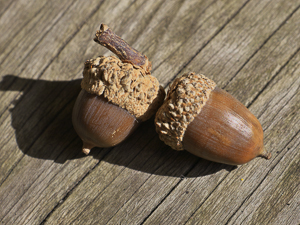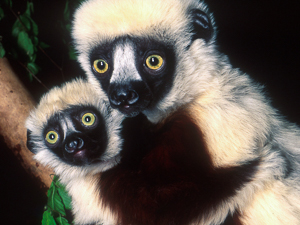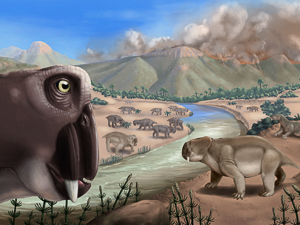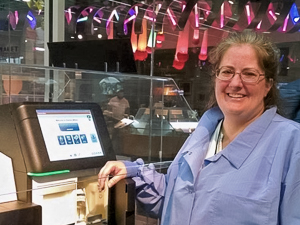
Nature Now! Acorns: This is just nutty
April 20, 2021
A White Oak sapling and sprouting acorn. Photo: Dr. Bronwyn Williams. Contributed by Naturalist Center intern Sam Coley Imagine you’re an acorn that just dropped from the branch of a huge White Oak tree (Quercus alba). Your first question might be, “What am I? What even is an acorn?” If you’re having an existential crisis… Read More >

New paper predicts COVID-19 risk in lemurs and lorises
Coquerel’s sifaka (Propithecus coquereli) is the lemur made famous by the kids’ show Zoboomafoo. A new study predicts that members of the genus Propithecus may be at high risk of contracting COVID-19. Note that these are representative photos of animals at increased risk of COVID-19. The Duke Lemur Center has not had any known cases… Read More >

Celebrate Earth Day with the Museum on April 22
April 19, 2021
Get ready for Earth Day with Museum DIY activities and special programs on Thursday, April 22, 2021! Earth Day DIY Activities Make Your Own Rain Barrel Make your own rain barrel to water your garden with instead of using well water or your city water supply.* Learn how to make your own rain barrel *This… Read More >

Earth’s biggest mass extinction lasted much longer on land than in the sea
Illustration of the Karoo Basin during the mass extinction at the end of the Permian, some 252 million years ago. The protomammal Lystrosaurus shown in the foreground. Lystrosaurus is what paleontologists call a “disaster taxon” — a group that thrived during a time when most other life was struggling. Illustration: Gina Viglietti. Our planet’s worst… Read More >

Becoming a scientist: My journey to the Museum
April 15, 2021
By Marianne Barrier, PhD; Lab Manager, Genomics & Microbiology Research Lab I’m amazed when I hear stories of individuals who knew at a young age exactly what they wanted to do and followed their passion straight into their chosen career. My path has been more of a winding road with lots of interesting side trips… Read More >

